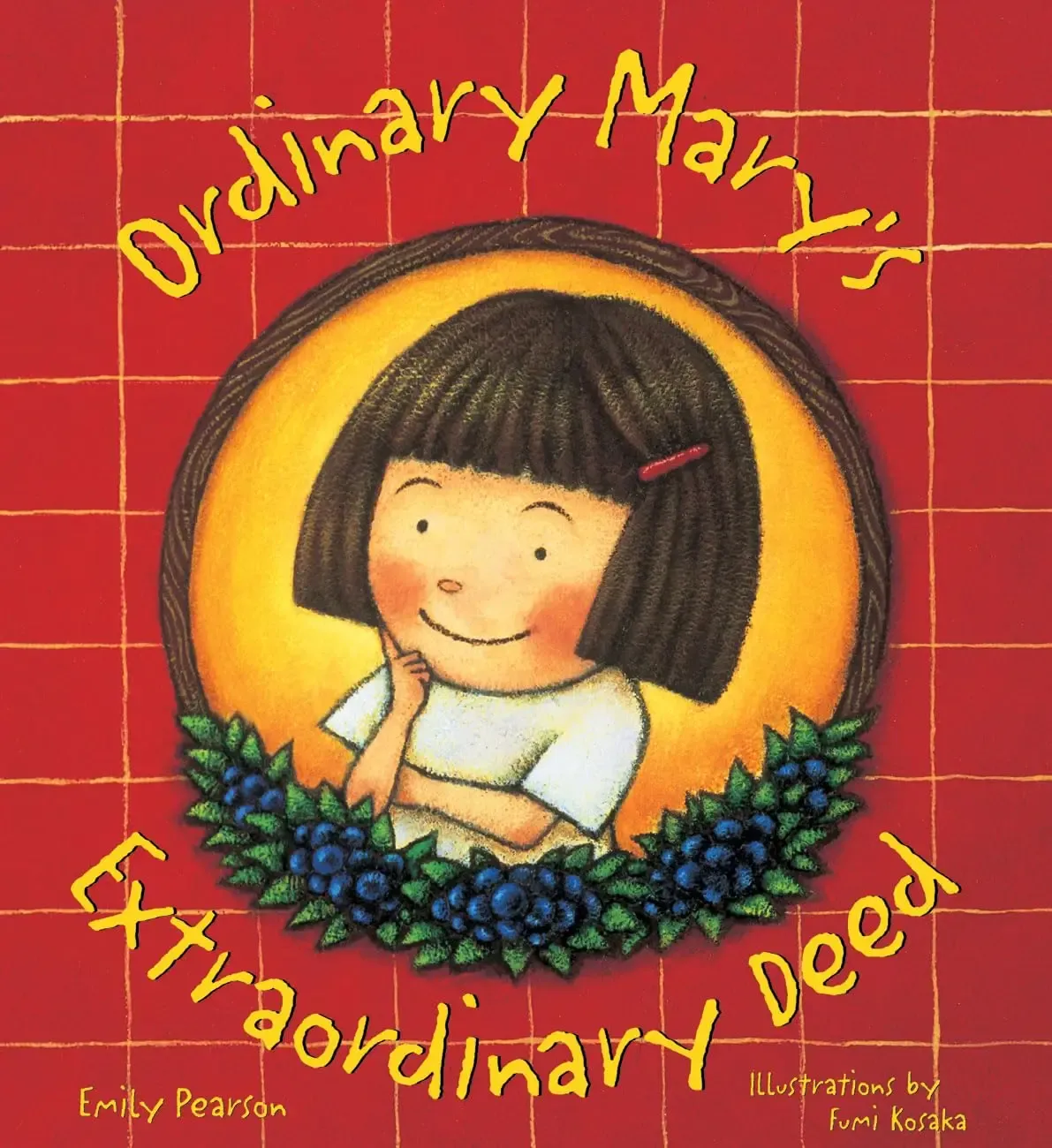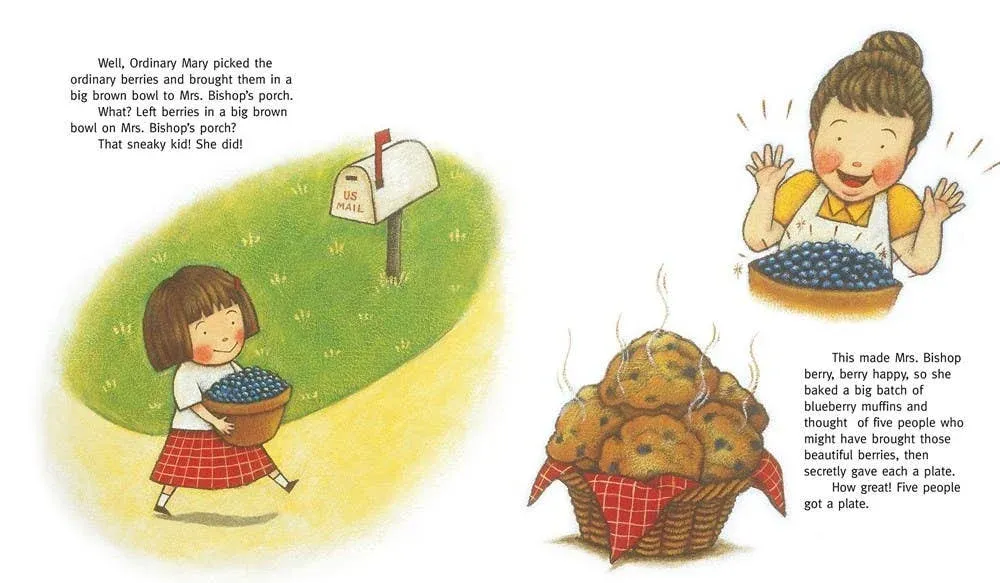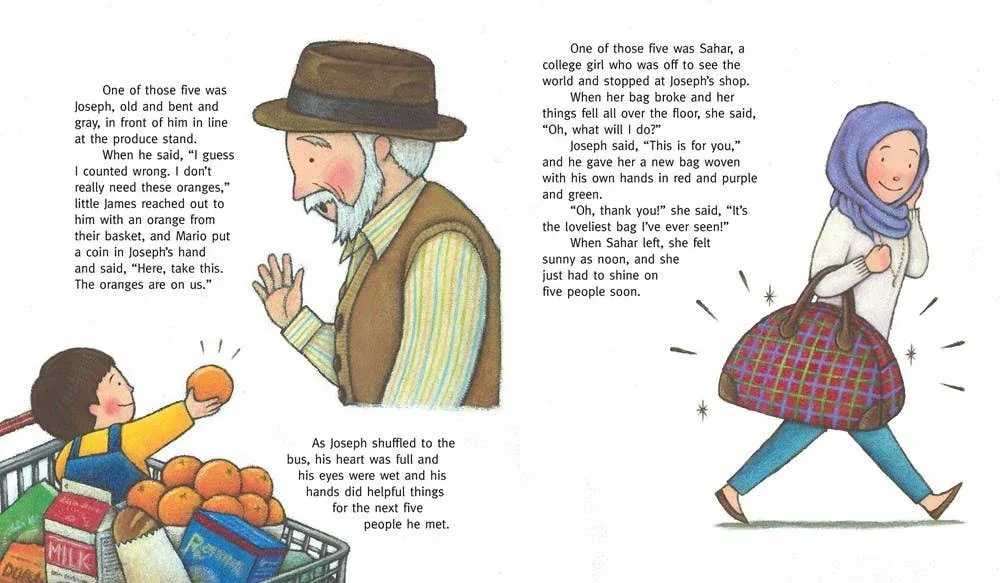Emily Pearson’s Ordinary Mary's Extraordinary Deed is an uplifting and heartwarming picture book that highlights the ripple effect of kindness. With a simple premise and a powerful message, the book shows how one small, seemingly ordinary act of kindness can grow and multiply, touching countless lives in unexpected ways. Paired with Fumi Kosaka’s bright, cheerful illustrations, this story is a celebration of the power of generosity and the potential within each person to make a difference in the world.
The story begins with a young girl named Mary, an “ordinary” child who could be anyone, a reminder that anyone, no matter how ordinary they feel, can create extraordinary change. One day, Mary picks a handful of blueberries and decides to leave them as a surprise on her neighbor’s porch. This small, thoughtful gesture is the spark that sets off a chain reaction of kindness. The neighbor is so touched by the unexpected gift that she, in turn, performs a kind deed for someone else, and this kindness spreads from person to person, across the world, like a wave of good deeds.
What makes Ordinary Mary's Extraordinary Deed so powerful is the way it illustrates the concept of paying it forward in a way that is both accessible and relatable for young readers. Pearson uses a simple, repetitive structure to show how each act of kindness leads to another, with the effect growing exponentially. The book reinforces the idea that even the smallest actions can have a big impact, which is an empowering message for children. It encourages them to believe that they, too, can make the world a better place, even with the smallest of gestures.
Fumi Kosaka’s illustrations play an important role in bringing the story’s message to life. The artwork is bright and playful, with vibrant colors that reflect the joy and warmth of each act of kindness. The characters are diverse and expressive, showcasing people of different ages and backgrounds as they experience the ripple effect of Mary’s original good deed. The progression of the illustrations mirrors the spreading of kindness, as the settings expand from Mary’s neighborhood to different parts of the world, reinforcing the idea that kindness knows no bounds.
Another strength of the book is its pacing. The repetition of the narrative structure, where one act of kindness leads to another, creates a rhythmic flow that is both engaging and easy for young children to follow. This repetition also helps to build anticipation as readers wonder just how far Mary’s simple act will go. By the end of the story, the scale of the kindness has expanded globally, with each person contributing to an ever-growing circle of goodwill.
Beyond the narrative, the book gently imparts important values such as empathy, generosity, and the power of community. While the story doesn’t preach, it subtly encourages children to think about how their actions affect others and how kindness can create a positive environment. It’s a message that resonates not only with children but also with adults, making the book a valuable resource for parents, teachers, and caregivers looking to teach lessons about compassion and the importance of giving.
The character of Mary is relatable because she is portrayed as an everyday child, with no special abilities or extraordinary circumstances. Her act of kindness is spontaneous and simple, making it clear that anyone can do what she did. This element of the story makes the idea of creating positive change feel achievable for young readers, empowering them to see themselves as agents of kindness in their own communities. The fact that Mary remains unaware of the vast impact of her deed reinforces the beauty of selfless giving, she performs the act without expecting anything in return, which is a powerful lesson in and of itself.
One of the book’s strengths is that it doesn’t rely on a traditional plot with conflict and resolution. Instead, the narrative focuses entirely on the positive effects of kindness, creating a feel-good story that leaves readers with a sense of hope and inspiration. While some may find the lack of conflict unconventional, it works well within the context of the book’s theme, allowing the message of kindness to take center stage without distraction.
If there’s any critique, it’s that the sheer scale of the ripple effect, spreading across the entire world, might feel a bit idealized for some readers. However, the fantastical nature of the story is what makes it so powerful; it presents a hopeful vision of what could happen if everyone embraced kindness in their everyday lives. It encourages readers to dream big, to believe in the power of one small action to create widespread positive change.
In conclusion, Ordinary Mary's Extraordinary Deed is a wonderful reminder that kindness is contagious and that even the most ordinary person has the potential to change the world. Emily Pearson’s simple yet powerful storytelling, combined with Fumi Kosaka’s joyful illustrations, makes this book an inspiring read for children and adults alike. It’s a perfect tool for fostering discussions about kindness, empathy, and the importance of helping others, and its message will resonate with readers long after the last page is turned. Whether shared in classrooms, at home, or in community settings, this story is a testament to the extraordinary power of ordinary kindness.
Questions to ask while reading:
- How does Mary's act of kindness affect the people around her?
- Why do you think the story shows the ripple effect of kindness spreading across the world?
- What are some ways you can show kindness to others in your own community?




